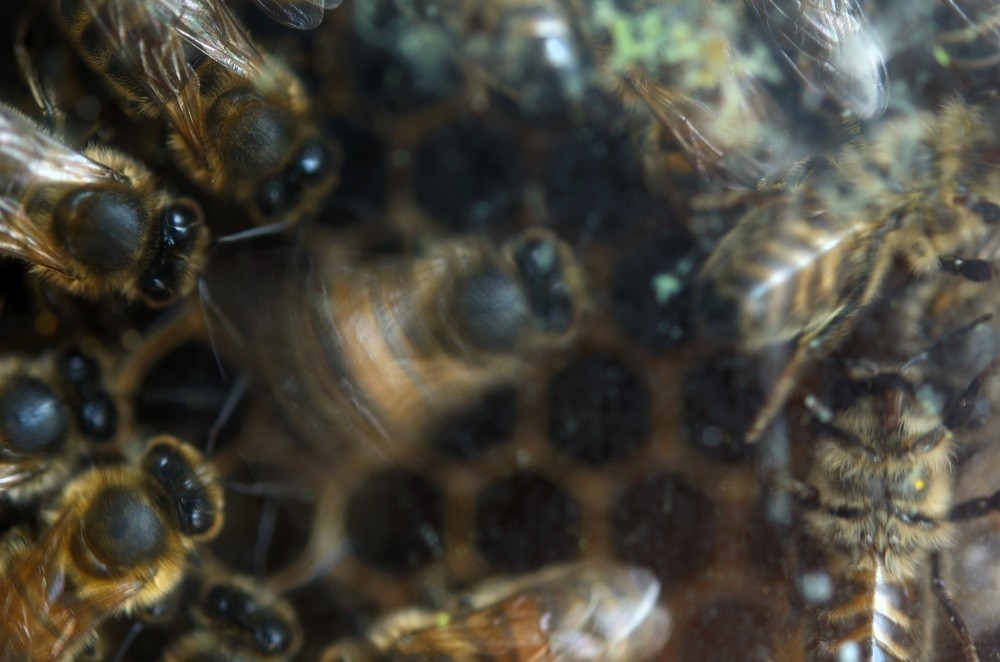How Gravity Messes with Honeybees' Waggle Dance

Honeybees are known to communicate in a dance language called the waggle dance to point out the location of resources that keep the hive alive, but new research reveals that gravity can mess with this dance's accuracy.
The waggle dance is an important part of how they provide for the bee community. Foragers go out, find food, water or other resources, and come back to signal the location to the rest of hive to go out and harvest.
"She will come back and do this dance which is communicating to her nest mates the direction and distance of where this resource is located," study researcher Margaret Couvillon, a postdoctoral researcher from the University of Sussex in the United Kingdom, told LiveScience.
Dance directions
The waggle dancing bee walks along the vertical honeycombs quickly vibrating her body and wings. The bee repeats this walk many times with her body angled in the same direction, indicating and re-indicating the same angle. [Photos: Honeybee Scouts Find Food]
The dance signals the direction of the food patch in relation to the sun, which is always interpreted by the other bees as straight up (regardless of where it is in the sky). If the dancing bee positions its body straight up, that indicates to the other bees to fly straight toward where the sun is on the horizon. If the dancer angles her body with face pointing down toward the ground, which means the food patch is located directly opposite the sun's position on the horizon.
The researchers realized that sometimes, the bees' dances are more variable. If the bee is trying to signal to others to head 20 degrees from the sun, they will sometimes signal 18, then 22, then 19 and maybe 23, but the average will be 20.
Get the world’s most fascinating discoveries delivered straight to your inbox.
"If you watch, each one of these successive waggle runs is a bit different from the last," Couvillon said. "The angles are a little noisy — there's a bit of error."
The researchers wondered if this variation was meant to signal something specific (such as a dispersed patch), or if it was a mistake.
Defying gravity
They carefully measured the dances of the honeybee foragers in a hive in their lab with clear walls, so the researchers could watch the bees come and go when foraging in the countryside. The team watched 198 waggle dances, and specifically compared the amount of variation — how often the bees strayed from their intended angle — with the angle they were trying to signal.
When bees signaled angles close to the horizon, like 90 or 270 degrees, they seemed to have much more trouble staying on point than when walking directly up or down. The researchers think that horizontal angles are more difficult because the bees need to work against gravity to stay in a straight line.
Preliminary data from one of Couvillon's colleagues shows that when a bee has more trouble repeating an angle clearly, her nest mates may ignore her.
The study is detailed in the April 18 issue of the journal Biology Letters.
You can follow LiveScience staff writer Jennifer Welsh on Twitter, on Google+ or on Facebook. Follow LiveScience for the latest in science news and discoveries on Twitter and on Facebook.
Jennifer Welsh is a Connecticut-based science writer and editor and a regular contributor to Live Science. She also has several years of bench work in cancer research and anti-viral drug discovery under her belt. She has previously written for Science News, VerywellHealth, The Scientist, Discover Magazine, WIRED Science, and Business Insider.




